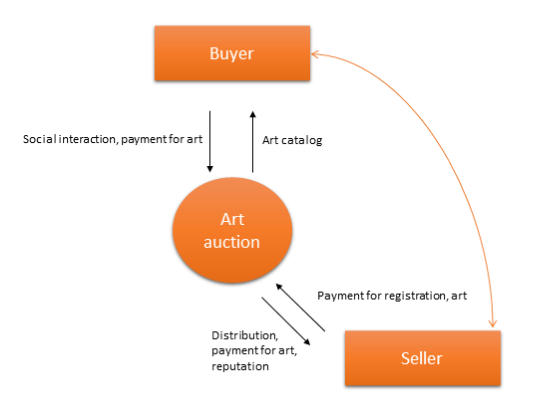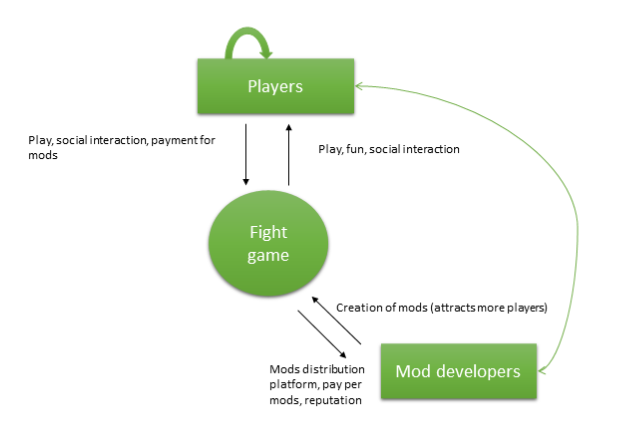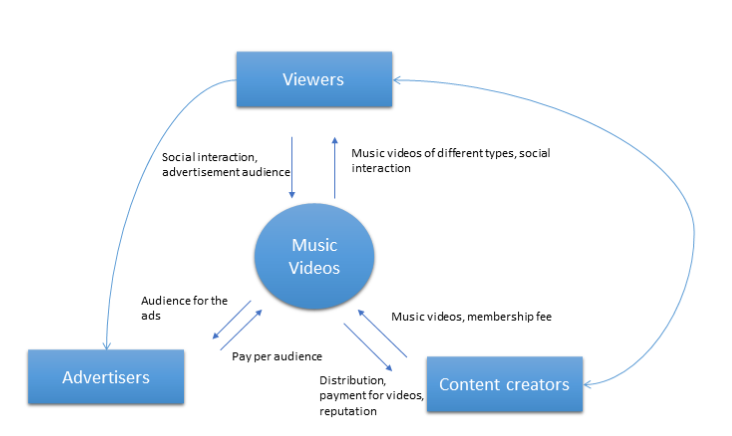Oil has long been called the black gold and we would often see oil platforms in movies as a symbol of wealth. Today we are going to talk about another type of platforms that are not related to oil but that, in the digital era, are very present in the markets: digital platforms.
We can define platform as a space where value is created by facilitating the direct interaction of two or more different types of customers. When we take this type of interaction to the digital world, that is when we talk about a digital platform. Depending on the types of customers and associated value, platforms can be either private or public.
Let’s think about some of the most well-known platforms such as Amazon or Uber. In the case of Amazon, the platform connects product sellers and customers. In the case of Uber, it connects drivers and people who want to travel.
And why are platforms so important today? Because of their ability to scale and generate value in multiple directions, which is what we call network effects.
The business model of the platforms is based on the so-called two-sided markets, where two different groups of users provide network benefits to each other, as we mentioned in the case of Amazon or Uber.
These benefits between different groups or individuals are magnified by economies of scale, i.e., for example in the case of Uber, if I am a customer, the more drivers the better for me, but if I am a driver, the more customers the better for me. The network effect.
Direct and indirect network effects can occur on a platform, and each can be positive or negative.
We will have a direct effect, when increasing the number of customers of one type makes the platform more attractive (positive effect) or less attractive (negative effect) for THAT type of customers.
On the other hand, we will have an indirect effect, when increasing the number of customers of one type makes the platform more attractive (positive effect) or less attractive (negative effect) for ANOTHER type of customers.
To better understand the effects, let’s look at some examples of platforms.
Platform A will be dedicated to the auction of art objects. As customers of the platform we will have art buyers and art sellers. In this case, we have positive network effects between both clients, since the more sellers there are, the more buyers we will attract. Similarly, the more buyers there are, the more sellers will want to be on the platform.

Platform B will be an online fighting game. As customers of the platform we will have the players who fight in the games and the developers who create new mods and weapons. In this case there is positive indirect network effect between both types of customers. In addition, we also have a positive direct effect and that is that the more players there are, the more interesting it will be for other players to be there.

The C platform will be a place to upload homemade music videos. The clients are the creators of the videos and the people who view them. In this case, indirect network effects are still present. In the case of customers who come to watch videos, there are no direct network effects. A person who wants to watch videos will not be attracted to use the platform because there are more people watching videos, there is no direct effect of any kind. In the case of content creators, it can be said that there would be a certain negative direct effect, since the more creators there are, the less likely they are to watch a given creator’s videos.

So far we have seen platforms with two different types of customers, but there may be many (multi-sided markets/platforms) and the network effects may not be symmetrical. For example in the case of adding advertisers to any of these platforms. Let’s suppose we add it to the C platform. In this case, neither the content creators nor the people watching the videos are going to be attracted because there are more advertisers. In the case of advertisers, they will be attracted by the more people watching videos, but not so much by the number of videos.
One way to represent the network effects and better see their influences is to draw the platform in the center, and around it all the different types of customers you have. Mark both direct and indirect positive effects on them. The one with the most arrows coming out (the one that produces the most network effects) is the one we are most interested in for scaling the platform. In addition, in this graph, we can also mark the value that the platform delivers and receives from each of the customers.
It is important to differentiate the network effects from the value contributed to the platform. In the case we have just seen, advertisers do not have a network effect on people who want to watch video, but they do bring a great value to the platform that has a direct impact on video consumers and, perhaps, by having ads they can watch the video for free, since the advertiser is the one who pays the platform. An example of this is Youtube.
Knowing the customer that has the most impact on growing the platform will allow us to focus our efforts on that customer to help attract the rest of the customers, and this is very important. The platforms, as we have mentioned, have network effects, and this will mean that the more customers you have, the more interesting it is to be on that platform, so it is important to grow fast to attract more and more customers. Who will connect to a housing rental platform if there are only two homes, or who would want to advertise on this platform if there are no visitors? In the world of digital platforms, usually the one who gets a big share of the market, gets almost all of it because people will want to be on that platform. Can the reader imagine someone who can compete with Amazon?
We must not forget one thing: data. The information that moves on these platforms is very extensive and its analysis gives rise to know customer behavior, which can be very beneficial for its sale and analysis. At the beginning we talked about platforms and black gold. We ended up talking about platforms and digital gold.
Good analysis on this type of platforms. It would be interesting to talk about platforms for developers as well
Thank you for the feedback. I will do.